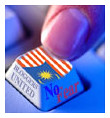Bukan Ulama Tetapi Lebih Penghafal Tanpa Berakal
Bukan Ulama Tetapi Lebih Penghafal Tanpa BerAkal
M. Bakri Musa Petikan #31 dari buku saya: Qur’an, Hadith, and Hikayat: Exercises In Critical Thinking. 7 Disember 2025
Walaupun keIslamanan cara kuno a la kaum Arab Badawi bermaharajalela dan membelenggukan di Malaysia, masih terdapat segelintir jiwa dan perbadanan yang berani mencabar keadaan sosio-agama semasa.
Antaranya ialah badan bukan kerajaan (NGO) Sisters In Islam (SIS) yang diterajui oleh Puan Zainah Anwar. Mereka lebih memberatkan masaalah yang di hadapi oleh kaum wanita kita dan berpegang teguh pada keyakinan bahawa Islam adalah daya pendorong untuk membebaskan wanita, bukan mengongkong mereka.
Dalam tafsiran kuno Islam di Malaysia (seperti juga di tempat lain), cabaran yang dihadapi oleh SIS sememangnya berat dan tenat. Mereka dalam SIS kurang mementingkan tafsiran kitab suci yang rumit dan usang, sebaliknya lebih menumpukan usaha untuk menyelamatkan wanita yang didera, isteri yang diceraikan dan diabaikan, serta menyelamatkan gadis muda yang dipaksa kahwin dengan lelaki tua. Semoga Allah memberi ganjaran kepada para wanita SIS atas kerja baik mereka, dan semoga mereka terus gigih melaksanakannya.
Satu lagi badan ialah Islamic Renaissance Front (IRF). Persatuan ini memainkan peranan penting membawa penceramah berkaliber seperti Tariq Ramadan (cendekiawan Islam di Universiti Oxford), Mu’nim Sirry (bukunya Scriptural Polemics: The Qur’an And Other Religions), dan wartawan Turki Mustafa Akyol (Islam Without Extremes: A Muslim Case For Liberty) ke Malaysia. Akyol telah ditahan setelah menyampaikan ceramahnya di Malaysia. Hanya dengan campur tangan pada peringkat diplomatik tertinggi yang berjaya membebaskannya. Akyol kemudiannya terus menceritakan pengalamannya yang pahit di Malaysia kepada pendengar di seluruh dunia, termasuk di tempat seperti Harvard.
Forum awam IRF lebih cemerlang dan banyak memberi fikiran tetapi ceramahnya terpaksa diadakan di bilik persidangan hotel kerana tiada jawatankuasa masjid atau jabatan akademik universiti yang sudi menyambut di tempat mereka. Forum IRF menyegarkan dan jauh berbeza dari wacana agama biasa. Pertama penceramah mereka tampil dalam pakaian biasa dan bukan berjubah tebal dan panjang serta berhias dengan serban berjela. Lebih penting lagi, penganjur memperuntukkan masa yang mencukupi untuk sesi soal jawab dan perbincangan yang mantap. Itu adalah satu perbezaan ketara bila dibandingkan dengan "perbincangan" awam ala jalan sehala yang menjadi ciri utama di Malaysia.
Pada satu ketika IRF menampilkan Mun’im Sirry dan Mohammad Asri Zainal Abdin, seorang ulama selebriti Youtube dan juga Mufti Perlis. Beliau lebih dikenali dengan akronimnya Dr. Maza, meniru sarjana hebat Za’aba. Dalam sesi itu, Dr. Maza terus keluar semasa perbincangan kerana beliau tidak bisa di soal dengan tajam atau pandangan agungnya dicabar.
Kedua SIS dan IRF di label dengan gelaran “Islam liberal” yang bersifat untuk menghina. Beginilah caranya. Apabila anda tidak dapat mengalahkan mereka dengan hujah, anda melabel mereka dengan istilah yang hodoh.
Sebaliknya di Indonesia istilah Islam liberal juga disifat rendah atau mengejek (sekurang-kurangnya di kalangan golongan elit pemerintah), tetapi jenama Islam tersebut sedang berkembang pesat di sana. Mereka mempunyai saluran televisyen sendiri (LiberTV) dan kumpulan pemimpin dan pendakwah yang berkelayakan tinggi. Lebih mengkagumkan lagi, mereka berjaya menarik perhatian generasi muda dalam jumlah yang cepat semakin meningkat.
Apabila salah seorang pemimpin awalnya, Harun Nasution, kembali dari kajiannya di McGill Universiti, Montreal, Kanada, pada tahun 1969, beliau sedar pandangan neo-Mutazilite modennya tidak akan mendapat sambutan baik daripada golongan elit dan masyarakat umum. Beliau mengelakkan konfrontasi secara langsung dengan menubuhkan institusi beliau sendiri, yakni Institute Agama Islam Negri (IAIN) menjadikannya disangka sebagai satu perbadanan awam. Ramai sarjana terkemuka kemudian seperti Nurcholish Madjid adalah keluaran IAIN.
Walaupun terdapat usaha seperti yang dilakukan oleh IRF dan SIS serta IAIN di Indonesia, kepercayaan yang dominan di kalangan Muslim Nusantara ialah akal (rasional atau intelek) tiada tempatnya dalam agama kita, malah dianggap sebagai anti-Islam. Seperti minyak dan air, mereka percaya akal dan agama harus kekal terpisah, berbeza, dan tidak boleh dicampurkan sama sekali.
Tidak hairanlah bahawa Islam di kalangan orang Melayu hari ini kurang untuk memberi panduan menuju ke jalan yang lurus, tetapi lebih kepada satu alat untuk mengkorah masyarakat Melayu ke dalam kehidupan yang terkurung dan tertutup seperti kaum Badawi Arab semasa zaman Nabi.
Seterusnya: Pendidikan Agama Di Malaysia


